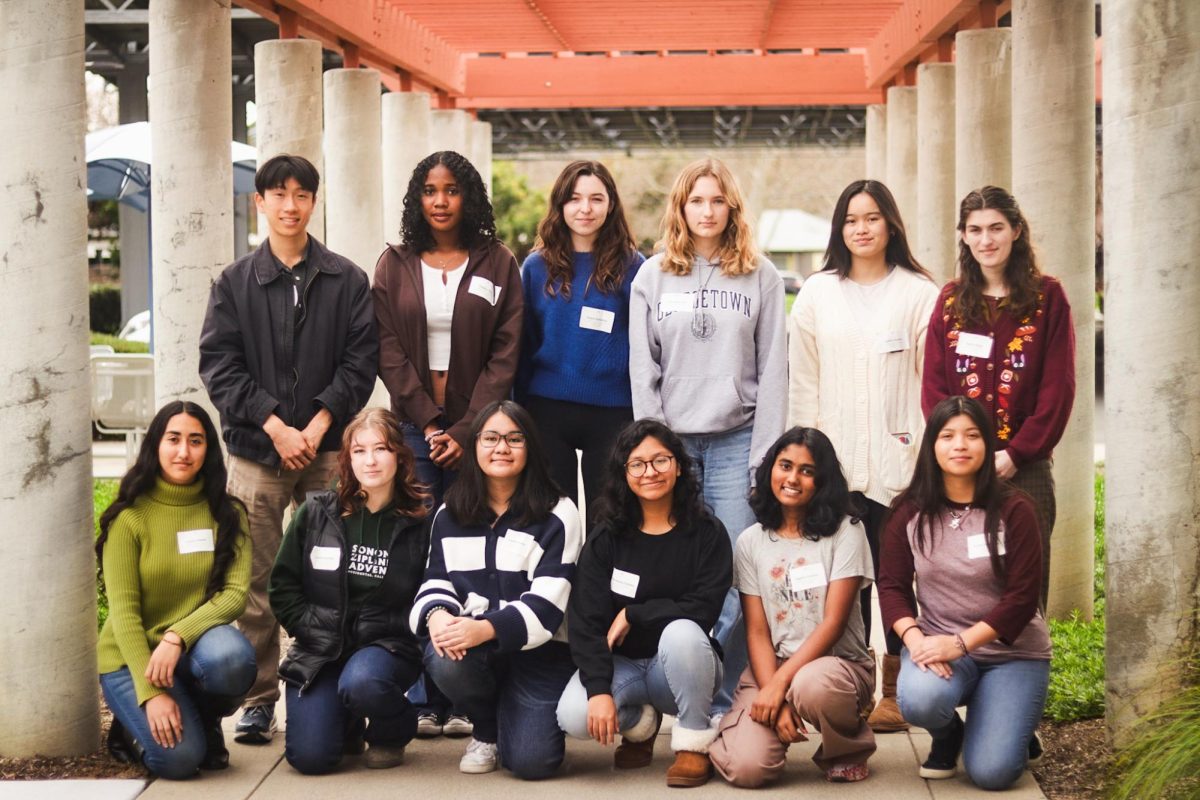As journalism programs in schools are declining across the country, outside initiatives like Contra Costa Youth Journalism are primed to give high school students a platform for their voices and concerns to be heard.
The pilot program created by Stephen O’Donoghue – director of California Scholastic Journalism Initiative – aims to expose news to a greater variety of students by recruiting from high schools directly. The project gives its recruits an opportunity for young writers’ to share stories from their school and local communities.
“We wanted to revive journalism in schools that don’t have it any more – or never had it – because, academically, they benefit from that,” O’Donoghue said. “That’s the basic idea behind the Contra Costa program.”
When the No Child Left Behind Act was enacted in 2002, requiring K-12 schools to institute a measurable proof of academic success, many districts were forced to eliminate elective programs, like music, arts and journalism, in exchange for remedial programs. However, many of the schools impacted by this were high poverty schools with a high number of students of color. This, O’Donoghue said, is also why many youth journalism programs were created.
This program – CCYJ – launched in January 2024 with 13 high school students who are getting the chance to have firsthand experience in being a part of local news. Over the next four months, the students, who come from both established school newspapers, as well as those who are interested in learning more about writing and journalism, will report on and write stories; take part in training workshops; and learn about the skills and tools needed to further a career in journalism – all with the goal of filling a void in local and community news.
‘Helps with communication skills’
Research – including one published by the Newspaper Association of America – shows students who participated in these types of programs had higher grade point averages and higher standardized test scores than their peers. They also went on to perform better in college level writing and reasoning.
CCYJ’s program coordinator, Bruce Koon, explained that it is through improving these abilities in these programs that students are able to succeed so well afterward.
“It’s just a very good discipline that helps with communication skills, helps you appreciate what it takes to be involved in a democratic society that requires civic engagement, and it helps challenge students how to think broadly,” Koon said. “Students that worked on a high school newspaper or a journalism program, regardless of what career or line of work they did as a result, did better in college and later on in life.”
Youth news programs such as CCYJ foster student growth both academically and personally. Additionally, these young journalists who are involved in writing for school newspapers, yearbooks and community publications significantly benefit from their experiences, experts say.
Yet, despite the benefits youth journalism programs provide participants, there are often difficulties starting and keeping these programs running.
Part of the problem is that journalism – which many school districts consider “the arts” – receive less attention compared to other extracurriculars. Brandon Lawson, an English teacher and former newspaper club adviser for Pittsburg High School in Contra Costa County, said that part of it has to do with a lack of investment by schools and students alike.
Lawson remembered trying to get the Pittsburg High School newspaper up and running was difficult because of the limits in trying to get people to know about it.
“So you ask why don’t that many people want to do it? Why was I the first person to think about that idea? What’s the barrier of entry for other people?” Lawson said, adding that funding plays a role for many schools.
However, a bigger challenge was attracting attention to it.
“I’m not saying that people will do it because of money,” Lawson continued. “Like me doing it would not have changed if it was for money or not. I’m just saying if we had more advisers or more people willing to do it, we’d get more opportunities for kids who want to do it.”
At Liberty High School in Brentwood, Michael Davidson Jr. – a 12th grader in his third year as a staff writer and copy editor for his school newspaper – found that the work of their school’s journalism program also goes unseen.
“I’ve talked to a lot of students and teachers who didn’t know we had a newspaper even though we passed them out,” Davidson said. “There’s a bunch of students, I’d probably say well within the hundreds, that had zero clue we had a newspaper.”
Another issue is the mistrust of media and news outlets by students, especially with the rise of the internet. The digital boom made receiving information quicker and more accessible than ever before, but it made misinformation and biases more widespread, too.
Koon, who has worked professionally in the journalism field since before the arrival of the digital age, shared his disappointment with this negative impact.
“What we didn’t anticipate was the amount of misinformation and opinions that would be going out,” Koon said. “Students – young people today – are very distrustful of institutions and authorities, and I think it’s because of these changes.”
Trust in the media has declined
According to Gallup’s research polls, trust in media has been dropping to all time lows across all age groups in the U.S.
Professional journalism is declining in America, as well. Newsroom employment dropped by 26% since 2008 and since 2005, the country has lost more than a fourth of its newspapers – set to reach up to a third by next year.
Local news, which CCYJ aims to cover with its recruits, takes the brunt of the loss. Most of the places that lost their newspapers don’t get digital replacements and those that do, often still face skepticism.
The program’s young writers lead diverse lives, but they connect through the desire to learn and be the ones to address the issues arising in professional and school news.
Loujain Habibi has been enrolled in Liberty High School’s journalism class since her sophomore year.
“This year, I started to look at journalism as my career, something that I actually consider doing,” said the 11th grader at the Brentwood school. “I wanted to get an actual taste of what that’s like as a career, so I wanted to do CCYJ.”
Keerthi Eraniyan, of San Ramon’s California High School, said she joined her school’s newspaper and CCYJ for the experience.
“I’m just beginning high school. I don’t quite know what I want to do, but I want to go into a field that is creative,” the ninth grader said. “I’m looking forward to learning the art of journalism and making new friends.”
Wendy Hernandez, an 11th grader at Pittsburg High School, has not had previous journalism experience, but her college pursuits to become an anesthesiologist motivated her to apply for CCYJ.
“I am from a lower class so the stipend money [writers receive] is going to help me with my university,” Hernandez admitted. “I never tried journalism, but I like telling fictional stories, and what’s the worst that could happen?
“I want to major in neuroscience, a STEM major that needs me to learn how to write about complex things. So, I decided to join CCYJ because it would be a new experience for me and for my skills to get better,” Hernandez added.
Regardless of the path its first recruits take, Contra Costa Youth Journalism is happy to open its doors to help.
“This is a pilot program. We certainly hope we’ll be able to get the support we need to continue it … we’re very optimistic,” Koon said. “Young people have lots of questions, lots of distrust of what’s going on, but they’re also very passionate about wanting to do something about it. Students care about so many important topics and they believe – and I believe – good, accurate, information leads to action.”
*Additional resources:
High School Journalism Matters
ED436014 1999-11-00 Journalism Student Performance in Language Arts. ERIC Digest D145.
Local Newsrooms Are Vanishing – Here’s Why You Should Care: Consider this from NPR.
Americans’ Trust in Mass Media Sinks to New Low
Civic Engagement Strongly Tied to Local News Habits | Pew Research Center
U.S. newsroom employment has fallen 26% since 2008 | Pew Research Center
Student Journalism and Civic Education
People Trust Themselves More Than the News
Cassydee Guinto is an 11th grader at Pittsburg High School in Pittsburg.



